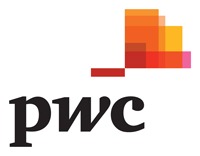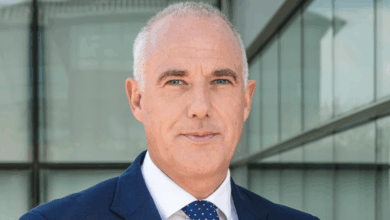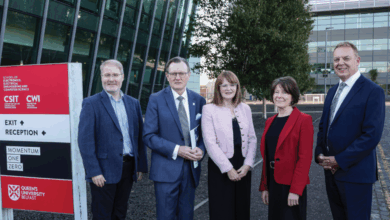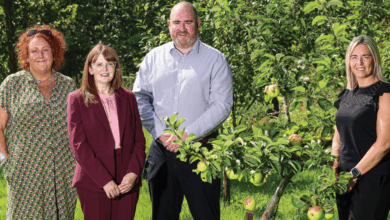Tackling youth unemployment through literacy and numeracy
 Making sure that all children can read, write and count properly when leaving primary school is central to tackling youth unemployment, according to Dr. David Armstrong.
Making sure that all children can read, write and count properly when leaving primary school is central to tackling youth unemployment, according to Dr. David Armstrong.
It was a Friday at the beginning of May 1998, about a month after the signing of the Good Friday Agreement and the Belfast Telegraph experienced an unexplained jump in sales. Urban folklore said that mothers across the North bought the Tele to send the jobs section to their kids working in England and Scotland.
The implicit message was that the war was over, the peace dividend would pour in, jobs were on the way and it was time to come home.
In part the folklore became truth. In the decade after the Good Friday Agreement, investment followed, creating around 124,000 new jobs, a level of growth that was impressive, even by global standards. But as some economists had warned, it was merely a veneer of prosperity. Since March 2008, we have lost 38,000 of those jobs and unemployment continues to rise.
There have been many casualties of the jobs downturn, but amongst the greatest are the most vulnerable – our young people. Today, over a fifth (21.4%) of Northern Ireland’s working age population aged 16-24 are now not in education, employment or training (officially described as, “NEET”) and in 2011 around 48,000 young people in Northern Ireland were categorised as NEET – an increase of 10,000 since 2007.
As the economy becomes realigned; high value-added exports from the manufacturing and tradable and business services sectors are recovering slowly; while more traditional industries remain mired in virtual recession. Unskilled jobs are vanishing, semi-skilled jobs are contracting and even a basic third-level education is no longer a guarantee of a job – let alone a rewarding one. A recent PwC report found that 65% of UK and Irish graduates were forced to compromise their preferred sector, employer, reward package and location, just to get a job.
The recent PwC NI Futures paper (Helping a lost and forgotten generation) looking at the size and cost of the NEET issue was launched at last month’s international Children of Conflict Conference and it makes grim reading. Northern Ireland’s NEET group is growing proportionally larger and faster than the rest of the UK and is now approaching crisis point, both in terms of the impact on an entire post-conflict generation and in pure economic cost.
Across the UK, the loss of productivity directly related to youth unemployment costs £10 million a day, while paying jobseeker’s allowance to young people under 24 not in education, employment or training is now £20 million a week.
In Northern Ireland terms, getting the NEET group into work would save a quarter of a billion pounds a year in lost productivity, so if the existing situation gets no worse between now and the end of the current Programme for Government, lost productivity alone, will have cost the Northern Ireland taxpayer £1 billion.
Northern Ireland’s expanding NEET group costs the local economy close to £5 million a week and the bill is getting steeper, driven by rising unemployment and school leavers opting for the job market as an alternative to university.
However, even if the Executive achieves its relatively modest target of promoting 25,000 new jobs across the economy over the period of the current Programme for Government, that won’t solve the NEET problem. That’s because around 40% of Northern Ireland’s NEET population are already disadvantaged by literacy, numeracy and lifestyle issues such as alcohol and drug use and brushes with the law. The downturn has hit this disadvantaged group particularly hard; they are increasingly disengaged with society and that disengagement is likely to become worse.
But aside from literacy, numeracy and lifestyle, other factors compound the NEET problem. These include a lack of signposting for students who do not wish to pursue higher education, a poor understanding of jobs available in the labour market and a lack of emphasis on the importance of ‘soft’ skills like communications, team working and customer handling.
It’s been argued that the so-called NEET problem is not unique to Northern Ireland and is a manifestation of the downturn in most developed nations. Not so. Our research compared the level of young people in Northern Ireland and GB classified as NEET with other countries and concludes that the Netherlands, Japan and Norway have extremely low NEET populations.
We also found that Germany had actually managed to reduce the percentage of its NEET population, despite the recession and its impact on overall unemployment. We discovered that some countries had national strategies to help young people who are likely to become NEET, with targeted interventions to help young people avoid the NEET trap.
However, there is little doubt that, regardless of nationality, there is a direct correlation between literacy and numeracy underachievement and the likelihood of becoming NEET and of the adoption of anti-social behaviours.
Currently, around 3% of young people leave Northern Ireland schools with no formal qualifications and many more do not achieve the necessary qualifications in numeracy and literacy. Failure to attain even basic qualifications leads to significant difficulties in gaining employment and can lead to social problems and disengagement and alienation from mainstream society.
The social cost of alienation is virtually incalculable in monetary resources and immense in terms of family and personal costs. A study by the Prince’s Trust also found that young offenders were more likely to be a victim of social exclusion than the general public and 13 times as likely to be unemployed.
Our research also concluded that children, whose parents were classified as NEET, are more likely to suffer the same fate as distinct from those whose parents were in regular education and employment. This creates the potential for clusters of high NEET populations, where a new generation is destined to suffer the fate of their parents. This group is typically disaffected, with issues surrounding low motivation and confidence resulting from generations of disadvantage.
However, the opposite seems to be the case for those not similarly disadvantaged. A Department for Education study in England concluded that only 3% of young people, whose parents were in professional occupations, were also categorised as NEET.
So, what’s to be done? At the heart of a NEET strategy is education and early identification of those at risk and strategies to keep them in education. It’s easier to avoid the problems in the first place than try and fix them later and there is no shortage of hard evidence to support this.
The first priority is to eliminate literacy and numeracy underachievement at primary school level and make that an absolute priority. Persistent absentees are seven times more likely to be NEET at age 16, as are those who don’t achieve five or more GCSEs. NEETs are more likely to cite “what mates were doing” as the biggest influence on their choices aged 16 than a “careers officer” or “school/teachers” combined, suggesting that the school careers system is possibly not addressing 21st Century needs. Improving links between schools and businesses will bring the reality of the world of work to the classroom, with best practice in Europe and Japan showing just how effective these programmes can be.
Government too, must become a real partner for change, making hard decisions about employment regulations, the minimum wage and the tax system. Businesses must be incentivised to create employment, take investment risks and offer opportunities to the workers of tomorrow. Real work experience – delivering the ‘softer’ skills of team working, communications and problem-solving should be financially – as well as career rewarding – for the young people and the employer.
 In 1998, a generation of young people who had fled to university and work outside Northern Ireland were told the war was over, the peace dividend would pour in, jobs were on the way and it was time to come home. Now we stand to lose a new generation, not to Scottish universities or jobs in England, but to unemployment, disadvantage and perhaps more undesirable outcomes.
In 1998, a generation of young people who had fled to university and work outside Northern Ireland were told the war was over, the peace dividend would pour in, jobs were on the way and it was time to come home. Now we stand to lose a new generation, not to Scottish universities or jobs in England, but to unemployment, disadvantage and perhaps more undesirable outcomes.
We need to be radical, brave and innovative if we are to address the problem of NEETs. The status-quo just won’t do.
Dr David Armstrong can be contacted on 028 9041 5716





